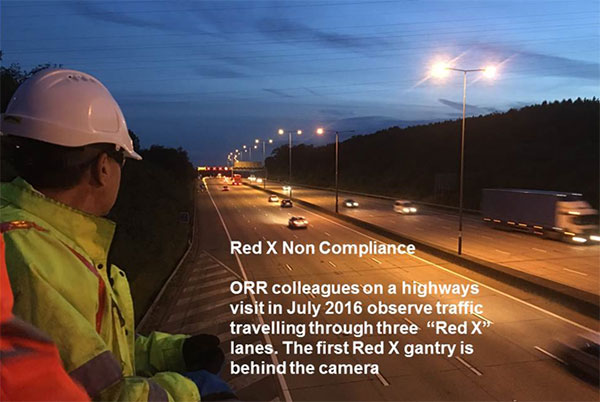Content archived on 25 April 2025
The middle Monday in September saw me at the Strategic Safety Forum for ConnectPlus – operators of the M25.
This forum was established a few years ago to consider how road user, and road worker, safety could be improved across the South East.
A lot of the major engineering and design contractors were there : Amey, Arup and Balfour Beatty, as well as A-One+ - operators of Highways England’s networks in several parts of the country.
I was there to present ORR’s initial views on Highways England’s safety indicators, and to explain the work my Highways Directorate has done so far to understand the challenges of meeting the ambitious five-year targets. Importantly, this includes seeking an overall reduction in numbers of those killed or seriously injured (KSI) by 40% by the end of the decade.
What struck me most at the Forum was a strong to desire for everyone to learn from each other; and it highlighted how safety is an issue where contractors put aside their competitive differences to work together, and to learn from best practice.
The discussion afterwards focused on what was seen as a lack of clarity on accountabilities in the roads sector for delivering safety improvements. We also discussed how, given our strong safety heritage, ORR could support Highways England in making a case to the UK Government for greater funding for safety.
Of most interest was how Railway Health and Safety colleagues in ORR could further share the learnings from their successful drive to reduce safety incidents. This includes how the precursor modelling used in the rail industry could be applied to roads.
There was a strong interest in this, and I will work with Ian Prosser, ORR’s Director of Rail Safety and his team to explore further how we work together.
 Red X Means Avoid The Spot
Red X Means Avoid The Spot
There was a very interesting session from Arup on "Red X compliance" – and whether motorists understand and follow the "Red X" instructions on smart motorways.
We’ve all seen the Red X – it tells us that a lane is closed or obstructed, and that we should move out of it.
Or at least, it should….
Reflecting on the high levels of non-compliance however, most people at the Forum seemed to believe that without further education, and a proper penalty regime for offenders, it is (sadly) only a matter of time before a major accident happens.
This is an issue we in ORR are discussing with Highways England in pursuit of their meeting that 40% KSI figure.
human performance
The subject of human performance in safety management was explored by presenters from Atkins and ERM.
After a very amusing explanation of why so many aircraft were being damaged by baggage handling machines driven by inexperienced operators, the session moved onto Highways England’s pilot to improve roadworks information.
This is based on a better understanding of how people react to the information they are given as they approach, enter and navigate roadworks. Early results on this are interesting and we wait to see more definitive results.
This topic was brought to life by two examples of deep-dive reports, where senior contractors visit worksites to assess the safety environment for both road workers and nearby road users.
A near-catastrophic incident at one site, where a lorry almost ploughed into the back of a slow-moving car, was deconstructed as being an issue with the planning for an overnight project, highlighting the benefit of looking at all elements of a project when assessing safety risk.
But perhaps the most sobering presentation was from a senior industry executive, who explained his background and why he was drawn to the sector, detailing a personal story following the death of his mother a car accident which could possibly be linked to a lack of preventative maintenance.
This sobering note was a strong reminder of why ORR needs to do everything we can to help the companies we regulate meet and beat their safety targets, and ultimately help make the roads safer for everyone that uses them, as we work to protect rail and road users.

